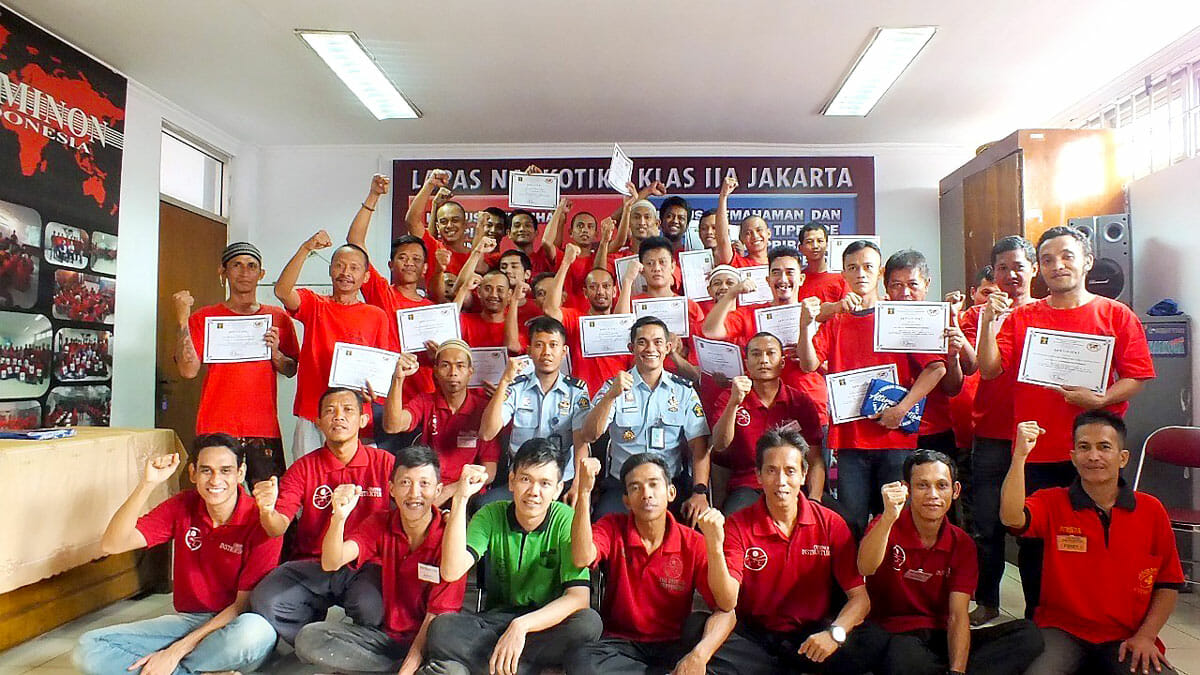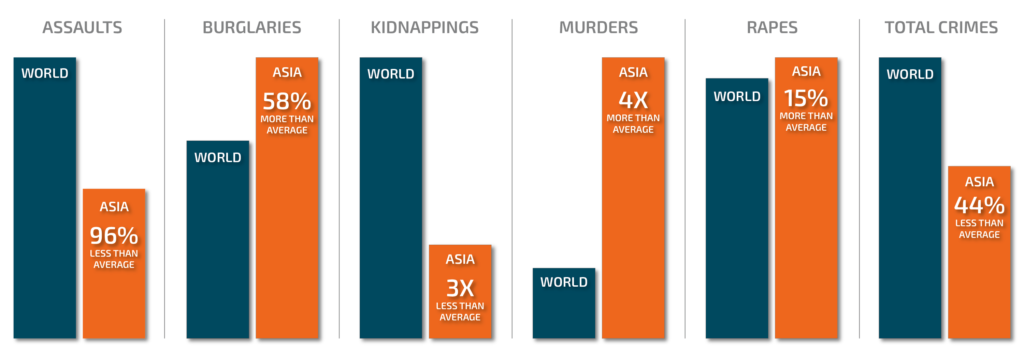
Asia
While the Asian continent only constitutes 30 percent of the Earth’s land area, it is home to 60 percent of the world’s population. About 4.5 billion people live in Asia, providing an excellent opportunity for insight into socioeconomic conditions and their connection to criminal justice.
What does crime look like on Earth’s most densely populated continent? What are Asia’s crime statistics, and how are punishments and penalties meted out? And last but not least, what does criminal justice reform look like in Asia?
Summary of Crime Statistics in Asia
Much like the rest of the world, Asia records its crimes on the basis of numbers of incidences per 100,000 (or 1,000) population. With that in mind, here’s a quick look at crime in Asia:

- Assaults: 108 incidences per 100,000 population (less than the global average).
- Burglaries: 561 incidences per 100,000 population (more than the global average).
- Kidnappings: .6 incidences per 100,000 population (three times less than the global average).
- Murders: 7 incidences per 100,000 population (four times more than the global average).
- Rapes: .118 incidents per 1,000 population (more than the global average).
- Total crimes recorded each year: Approximately 709,229 crimes (less than the global average).
A Look at Asia’s Criminal Justice System
Because of its sheer geographic size and its considerable population, it’s understandable that Asia’s criminal justice systems would vary considerably, one country to the next. For the most part, criminal justice institutions in Asia resemble much of the programs found in the rest of the developed world. Yet, in some regions, specific criminal justice approaches have earned global notoriety for their uncivil or outmoded practices.
For example, the Philippines came onto the radar of Amnesty International when president Duterte assumed office in 2016 and encouraged police forces to murder anyone connected to the drug trade.
Thankfully, stories like the one from the Philippines are the exception to the rule, not the rule itself. For the most part, Asian countries follow the global norm for advancing criminal justice policy to be more fair and humane (with one exception, see below).
Penalties – How Asian Countries Mete Out Punishment for Crime
There is an odd disparity in Asia when it comes to criminal justice. Historically, countries with a poor Human Development Index tend to be more likely to observe the death penalty. But this is not the case in Asia.
First, let’s take a look at the definition of the Human Development Index. From the United Nations Human Development Reports, “The HDI was created to emphasize that people and their capabilities should be the ultimate criteria for assessing the development of a country, not economic growth alone. The Human Development Index (HDI) is a summary measure of average achievement in key dimensions of human development: a long and healthy life, being knowledgeable and have a decent standard of living. The HDI is the geometric mean of normalized indices for each of the three dimensions.”
But here is where the disparity comes in. Of the 12 countries with a very high Human Development Index that still practice executions, ten are in Asia. These countries are Japan, Taiwan, Singapore, Malaysia, Saudi Arabia, Kuwait, Bahrain, Oman, Qatar, and the United Arab Emirates.
For some reason, when Asian countries achieve a very high quality of living for their residents (as measured by the HDI), they tend not to move away from more extreme punishments for criminals (such as the death penalty).
Criminal Justice Reform in Asia
In many Asian countries, children are treated similarly to adults under the law, with deprivation of liberty (incarceration) being used as the primary punishment method.
Also in many Asian countries (particularly Southeast Asia), violence against women goes unpunished as such violence is seen as a private matter. That has allowed for a continuation of domestic violence in Asian countries, a sort of unspoken, tacit agreement that domestic violence is not a criminal offense.
Much of criminal justice reform in Asia revolves around efforts to reduce the severity of sentences for children, ban the death penalty, and pursue appropriate criminal justice for domestic offenders.
Sources:
- https://www.nationmaster.com/country-info/groups/East-Asia-and-Pacific/Crime
- https://www.amnesty.org.uk/philippines-president-duterte-war-on-drugs-thousands-killed
- http://hdr.undp.org/en/content/human-development-index-hdi
- https://www.unodc.org/southeastasiaandpacific/en/what-we-do/criminal-justice/criminal-justice-reform.html




